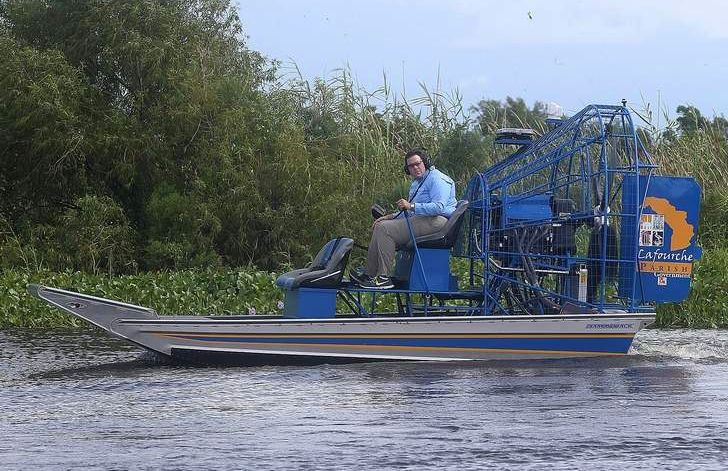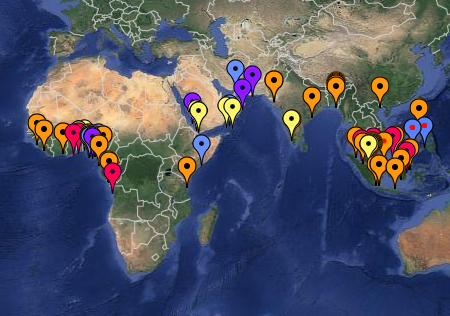terracing work continues to create marsh and attract waterfowl
published: 04 sep 2015
by: Meredith Burns
In Bayou L’Ours (Louisiana, USA), east of the south Lafourche levee system, long narrow strips of marsh stretch across an area that was once a pocket of open water.

Lafourche Parish administrator Archie Chaisson drives an airboat Thursday after looking over a marsh terracing project in marshland in south Lafourche.
The new land is the result of a marsh terracing project planned since 2012 in conjunction with nonprofit Ducks Unlimited, Lafourche Parish government and landowner ConocoPhillips.
The project, now in the second of five phases, is designed to restore eroded marsh of Bayou L’Ours, protect the levee system and create a productive habitat for fisheries and waterfowl, said Lafourche Parish Administrator Archie Chaisson.
Chaisson described the terraces as mini-levees.
Four marsh buggies work at a time to dredge material off the water bottom, build the crown and shape the mound, which will serve as a platform for marsh grass.
Terraces created during the project’s second phase, which started in March and costs roughly $800,000, have planted marsh grass lining their perimeters.
The terraces built two years ago during the project’s first phase are now covered with marsh grass and total about 25 acres of new marsh.
Chaisson said the second section will create a comparable amount of new marsh, but the project actually benefits many more acres.
Not only do terraces slow down wave action to reduce land erosion, but the calm waters between the terraces support growth of aquatic vegetation.
Susan Testroet-Bergeron, executive director of Barataria-Terrebonne National Estuary Program, said those areas can be ideal for wildlife.
“This submerged aquatic vegetation is food for a lot of waterfowl. It’s good for fish. It’s good for shellfish. It’s sort of a feeding area for wildlife. And then you also get resting areas for wildlife where they can get sort of out of the wave energy,” she said.
These characteristics set terracing apart from a typical marsh creation project, which usually involves dredging large amounts of material from an area to create a continuous flat stretch of new land.
“These are two different tools in the tool box. Terracing is one tool, marsh creation is another tool. It depends on what you’re trying to do,” she said.
And sometimes the goal is to help preserve parts of local culture, such as duck hunting.
“By creating the terraces of course we’re doing a lot of good things for wildlife, but we’re also doing something good for humans. We’re creating another place for us to go hunting and that’s a part of our culture and who we are,” she said.
Chaisson said the major draw to terracing is that it is more cost-effective, mainly because of the type of equipment and construction methods used.
The same area can be protected by terracing for less than $1,000 an acre versus upward of $30,000 an acre through a typical marsh creation project, he said.
Testroet-Bergeron said thinking about the money available and what can actually be done with those dollars is important when considering taking on projects in the state’s $50 billion coastal master plan.
“We don’t have $50 billion,” she said. “So what our local governments are doing — and they’re doing it very well — is saying ‘OK, we’ve got this $1 million or we’ve got $2 million. What can we really do with that money that’s beneficial to the habitat and beneficial to the people?”


